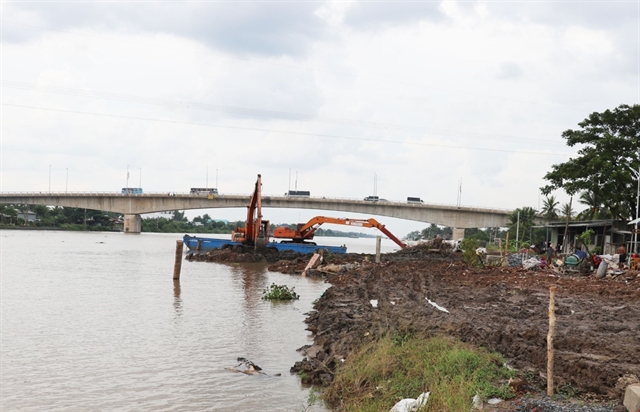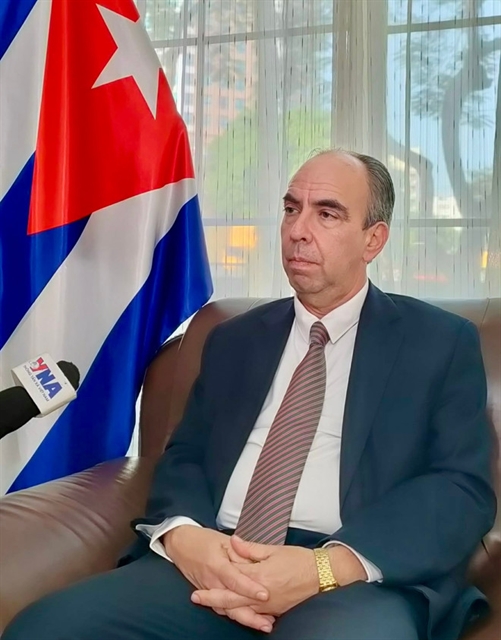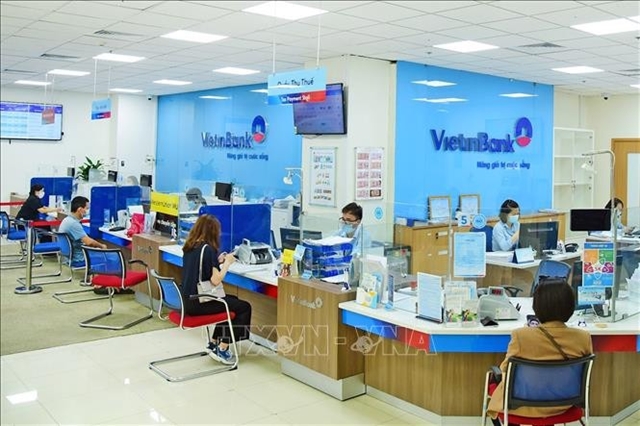 Society
Society
.jpg)

|
| A project to upgrade Chợ Gạo Canal will be completed by the end of 2023. — VNA/VNS Photo |
HÀ NỘI — The Ministry of Transport has approved a project to develop waterway corridors and logistics in the southern region with a total investment of VNĐ3.9 trillion (US$158 million).
Dương Thanh Hưng, director of Waterway Projects Management Board, said the project, funded through World Bank (WB) loans, received approval for investment in Decision No. 931/QĐ-TTg on August 4, 2022.
The project's primary goal is to enhance the region's infrastructure system, reduce congestion and accidents, and lower the cost of waterway goods transportation by renovating and upgrading the East-West transport corridor linking the Mekong Delta region and improving the North-South transport corridor connecting the southeast region with the Cái Mép-Thị Vải port cluster.
Traffic experts have noted that although multimodal transport in the southeast region (North-South corridor) is currently efficient, container transport in the Mekong Delta region (East-West corridor) remains limited, accounting for less than 2 per cent of transported goods.
Investment aims to address these bottlenecks along the East-West corridor, including the Hậu River (Cần Thơ City), Trà Ôn River, Mang Thít River, Cổ Chiên River, Chợ Lách Canal, Tiền River, Kỳ Hôn Canal, Chợ Gạo Canal, and some more.
It also targets congestion points along the North-South corridor through Đồng Nai River (Đồng Nai port), Nhà Bè River, Lòng Tàu River, Đồng Tranh River, Tắc Cua River, Gò Gia River, Thị Vải River (port cluster).
In terms of scale, for the East-West corridor, renovations and upgrades will ensure the passage of self-propelled ships of up to 600 tonnes and 3-layer container ships that usually operate round the clock, as well as self-propelled ships up to 1,500 tonnes during high tides. For the North-South corridor, the channel will be renovated to accommodate self-propelled ships of up to 5,000 tonnes and 4-layer container ships for smooth and safe navigation.
The project will involve dredging channels on rivers in the region and will include the construction of storage yards with storage compartments, sedimentation chambers, and dikes for dredged materials.
Bank protection embankments will be built at locations where channel dredging may risk bank erosion and structural instability. Additionally, the project includes the construction of Chợ Lách 2 Bridge across Chợ Lách Canal.
Regarding the project implementation process, the Ministry of Transport's Waterway Projects Management Board is responsible for receiving appraisal opinions and comments from relevant agencies and units to complete project documents in accordance with regulations.
The board is also coordinating with donors and relevant agencies to prepare and implement negotiation procedures and sign loan agreements for the project, in addition to working closely with localities on compensation, support, and resettlement to ensure project progress.
The Ministry of Transport's leaders believe that upon completion, the project will improve the efficiency and safety of two key inland waterways in the Mekong Delta and the southeast regions, enhance accessibility and mobility, reduce congestion on key waterways, and decrease transportation costs.
The project is expected to contribute to poverty reduction, economic development, and improved waterway traffic safety and security in border areas of the Mekong Delta and southeast provinces.
According to related agencies, the project needs VNĐ3.9 trillion including a VNĐ2.5 trillion loan from the World Bank for construction costs, consultation of the survey, technical design and site clearance, pile installation, construction supervision consulting and a VNĐ13.8 billion non-refundable aid from the Australian Government for the cost of the feasibility study report, an environmental impact assessment report and compensation policy framework, and resettlement support.
The Government will allocate VNĐ1.3 trillion for management, consulting, and site clearance costs. Total capital will be allocated in each phase along with the project's construction progress. The Ministry of Transport said that capital for the project in the 2021-25 period will be balanced and fully allocated according to the capital plan assigned by the Government.
The project is scheduled to run from 2023 to 2027 and falls into the category of a Group A inland waterway transport project with a specific scope of investment. The Waterway Project Management Board is the project investor. — VNS
.jpg)



